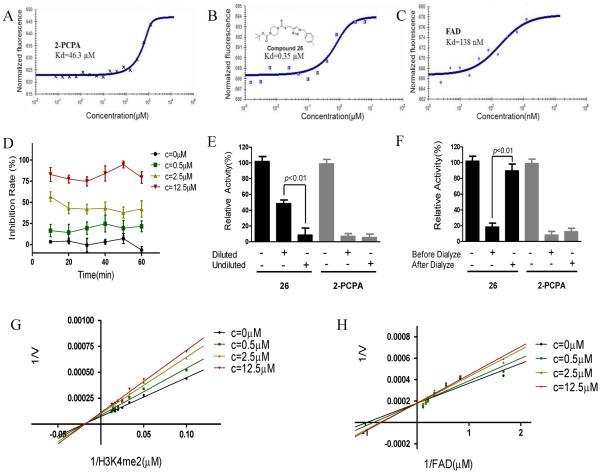Figure 4.
Properties of compound 26's inhibitory effect to LSD1 activity in vitro. (A, B, C) Kd values for 2-PCPA (A), compounds 26 (B) and FAD (C) were obtained by microscale thermophoresis (MST) experiment; (D) Time dependent assay of compound 26 against LSD1. The stable progress curves for the inactivation of LSD1 were obtained by indicated concentrations of compound 26 treatment; (E, F) The reversibility of compound 26 to LSD1 activity was determined by dilution assay (E) and dialysis experiment (F), 2-PCPA was used a control; (G, H) Lineweaver–Burk plots demonstrate that compound 26 is non-competitive with the histone H3 substrate (G) and competitive with the LSD1 cofactor FAD (H). Data are mean±SD. P<0.01 was considered statistically highly significant. All experiments were carried out at least three times.

